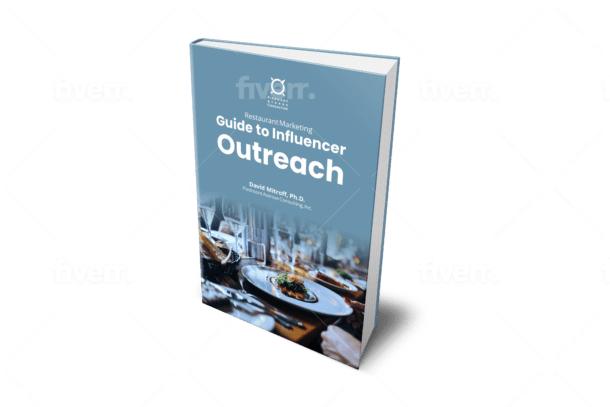Self-publishing has grown exponentially in recent years, fueled by tremendous advancements in affordable printing technologies and wider online distribution platforms. With more control and higher royalty earnings potential than traditional publishing, self-publishing empowers authors dramatically. However, the multiplicity of printing and promotion options also needs to be clarified.
Understanding Self-Publishing and Printing Options
There are two primary approaches to printing books for self-publishing:
- Print-on-Demand (POD): Books are printed individually upon order requests. They are never out of stock. This method is useful for lower-volume sales and enables testing before larger print runs.
- Offset Printing: Best for larger quantities with hundreds/thousands of copies produced upfront awaiting sales. Reduces per unit costs but contains more inventory and financial risk responsibilities. Allows wider distribution.
Within POD, key printing technologies include:
- Digital Printing: Fast and economical for shorter runs under 500 copies. Limited customization of print quality.
- Sheet Fed vs. Web Presses: Sheet-fed uses cut sheets suited for runs of less than 2500 copies. Faster web roller presses print on continuous rolls, which is better for very long run lengths only.
Other factors, such as paper grades, binding types, and finishing techniques, allow extensive book customization, so conduct due research on available specialists printing books.
The Advantages of Physical Books in a Digital World
Some argue that eBooks have made print books obsolete, but this is far from reality according to reader preferences, which gel well with the unique immersive experience and tactility of print. Here’s why:
- Enhanced Focus and Retention: Screens full of distractions hamper information retention over time compared to the deeper engagement physical books permit through notetaking and focused reading sessions, which yield measurable comprehension gains.
- Reduced Eye Strain: Staring at screens all day strains vision over time. Print books eliminate the glare, flickering, and sleep disruption of devices, providing comforting, hassle-free reading experiences instead.
- Tangible Ownership: Collecting books that have inspired you or hold sentimental value offers lasting enjoyment with treasured possessions to pass down generations as heirlooms someday.
- Preservation and Collectibility: Well-looked-after limited edition collectible books have accrued value over decades. The timeless charm of beautiful book covers and intricate illustrations withstands trends, making printed books coveted cultural artifacts.
- Gift-Giving Potential: Signed copies, novelty binding styles, or thematically matching introductory books gifted to newcomers make for far more meaningful, visually exciting presents than gifting eBooks or download codes ever could.
While digital formats dominate with impulse buys, nothing replaces holding your first published book and smelling that fresh print aroma while running your fingers across pristine pages. Print still matters.
Self-Publishing vs Traditional Publishing: Printing Considerations
Key distinctions around printing approaches apply when contrasting self-publishing with working with established presses:
Self-Publishing
- Full creative liberty without constraints/delays from external approvals
- Fully own rights and retain high royalty shares (80%+)
- Control printing decisions – POD flexibility is ideal for testing markets
- Requires personnel effort/budgets for editing, design, marketing, etc
Traditional Publishing
- Not feasible for all authors given competitive proposal needs
- Lengthy submission evaluation and production timelines
- Lower royalty share percentages compensated by press exposure
- No control over printing technology/quality or final published price
Key Steps to Self-Publishing
The path from completed manuscript through to published bookseller availability encompasses several milestones:
Editing and Formatting Manuscript
Invest in professional editing that addresses story flow, grammar, etc. Format using industry standards for seamless printing based on trim sizes.
Designing Book Covers and Marketing Materials
First impressions matter greatly. Hire talented graphic artists to design compelling covers and supporting marketing assets like author photos and book trailers, which are critical for promotion.
Selecting Ideal Publishing Platforms
Upload your manuscript across platforms offering global distribution, like Amazon Kindle Direct Publishing, while retaining ownership. Widen reach.
Pricing and Distributing Your Book Digitally and Physically
Make printed and eBook versions available through a wide range of online/physical bookstores and your own e-commerce site. Experiment with pricing.
Generating Interest Pre-Launch Through Marketing
Drum up anticipation through social media engagement, sneak peeks, cover reveals, ARCs for reviews, and email list building, prompting book sign-ups.
Publishing Your Book.
The moment of truth arrives. Finalize distribution settings and monitor analytics intently as that coveted “Live” status officially transforms you into a published author. Bask in your achievement.
Marketing Your Self-Published Book
Gaining visibility is an immense challenge, with thousands of competing titles flooding the landscape every day. But focused marketing efforts can break through the noise:
Leveraging Social Media and Your Network
Share snippets, quotes, and aesthetics far and wide while prompting friends/family to post reviews, cementing credibility for the prized “Social Proof” algorithm signal.
Pursuing Media Opportunities
Pitch guest articles in niche websites referencing your book. Arrange podcast interviews or virtual book tour events to relay captivating backstories, earning media spots.
Optimizing Metadata and Keywords
Strategic title selection, descriptive subtitles, and meta descriptions stuffed with reader-intent keywords attract ideal purchasers through searches.
Considering Advertising Avenues
Explore cost-per-click promotions across Amazon, BookBub, and social platforms through meticulous targeting, reaching those most inclined to buy based on interests.
Building Your Author Brand and Platform
Establish an author website with a blog, bio, and calls to action for email list signups. Grow followers consistently by providing value around core topics that will feed future books.
Monetization Models
Royalties from sales offer the most obvious monetization stream, but authors should diversify income utilizing supplementary money-making avenues:
Pricing Considerations – Finding the Sweet Spot
Experiment with price points between $0.99-$4.99 for eBooks and $10-$25 for printed copies based on comparable genres and lengths before the law of diminishing returns kicks in.
Streaming, Subscriptions, and Bundling Options
Aggregate your catalog thematically for serialized subscriptions while bundling print+digital combo options. Expand into ad-revenue sharing streaming platforms.
Affiliate Marketing Potential
Include contextual affiliate links to complementary products/services and earn commissions driving qualified clicks & conversions passively over time.
Public Lending Licenses
Enroll in library eBook catalogs through Overdrive/Libby partnerships, earn royalties from institutional loans, and bring awareness at scale.
Expanding into Audiobooks
Widen your audience reach exponentially by publishing audio editions narrated proficiently, capitalizing on multitasking listener retention compared to crowded eBook markets.
You’re Published, Now What?
The launch is only the beginning. Sustained marketing and iterations of expanding catalogues become the natural next priority:
Monitoring Book Performance
Stay on top of the latest ratings/reviews, catalog discoverability rankings, and sales trajectory benchmarks for the initial few months, guiding urgent refinements. Study competitor activities closely.
Continuously Marketing and Connecting With Readers
Keep funneling media appearances, advertisements, and compelling content centered around your book niche to maintain visibility through constant brand reinforcement efforts post-launch.
Handling Bad Reviews and Feedback
Address constructive criticism through policy changes or edition updates, balancing negative feedback professionally and avoiding retaliation. Feature positives prominently.
Developing Your Next Book
Retain readers craving more by strategically announcing the next book projects and release timeframes ahead of publication to build anticipation. Offer sneak peeks into writing processes.
Conclusion
The alluring prospect of self-publishing rests upon making printed book and eBook versions perpetually discoverable to eager audiences globally. This requires nailing production quality, distribution breadth, metadata optimization, and sustained marketing efforts in conjunction with reputable publishing services assistance specialists at every milestone. Stay adaptable and data-driven while passionately engaging communities through regular content that confidently conveys your creative vision.








